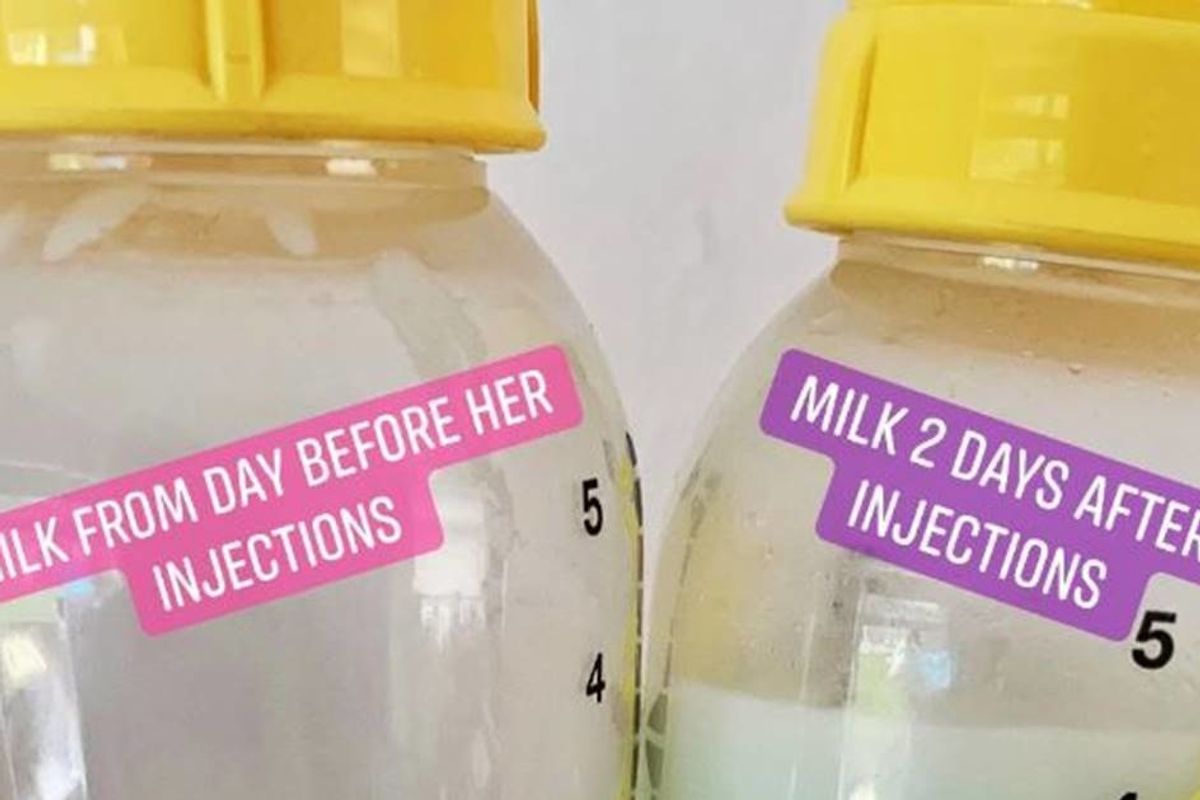Mother uses side-by-side photos to show the miraculous connection between vaccinations and breast milk

Breast milk is an incredibly magical food. The wonderful thing is that it's produced by a collaboration between mother and baby.
British mother Jody Danielle Fisher shared the miracle of this collaboration on Facebook recently after having her 13-month-old child vaccinated.
In the post, she compared the color of her breast milk before and after the vaccination, to show how a baby's reaction to the vaccine has a direct effect on her mother's milk production.
"The 'normal' colour milk is from the day before she had them, the 'blue' colour milk is from today - 2 days after she had them. It's blue from all the antibodies my body is producing as it thinks she's sick with what she was vaccinated against!" she wrote.
"When she feeds her saliva sends signals to my body to produce more milk with illness specific antibodies!" she added.
According to researchers, Fisher's hypothesis is correct. A mother's body can detect if a child is sick through breastfeeding and then pass on antibodies that will help immunize the child through her breast milk.
In 2015, Katie Hinde, PhD, a biologist and associate professor at the Center for Evolution and Medicine at the School of Human Evolution & Social Change at Arizona State University, explained the phenomenon to journalist Leslie Goldma of Mom.me.
"There, it is believed that mammary gland receptors interpret the 'baby spit backwash' for bacteria and viruses and, if they detect something amiss (i.e. the baby is sick or fighting off an infection), her body will actually change the milk's immunological composition," Hinde said.
"Putting this all together, some scientists hypothesize that this could be one of the ways babies let mums 'know' about their condition and mums respond with infection-fighting antibodies," she continued.
Fisher's post shows the amazing power of mothers, babies, vaccinations, and breast milk and how they all come together to create healthy children.
However, the post received a backlash from anti-vaxxers who have a hard time grasping the overwhelming scientific evidence that vaccines are safe. In fact, a 2019 study of over 650,00 children concluded that the MMR vaccine doesn't cause autism.



Fisher had some strong words for the anti-vaxxers who claimed she was harming her child. She says the "whole point of vaccinations" is to cause your body to "make antibodies and 'heal' itself."
"Don't come on my post preaching about not having vaccinations and them been poisonous," she wrote. "I hope your child(ren) never becomes ill with anything serious or doesn't pass it on to a poor baby waiting to have their immunisations because you don't believe in vaccinations!"






 Side Eye Dog Meme GIF
Side Eye Dog Meme GIF Meme Reaction GIF by Tokkingheads
Meme Reaction GIF by Tokkingheads Rihanna Nails GIF
Rihanna Nails GIF When the parents don't even know about it, that's a successful surprise party.
When the parents don't even know about it, that's a successful surprise party.